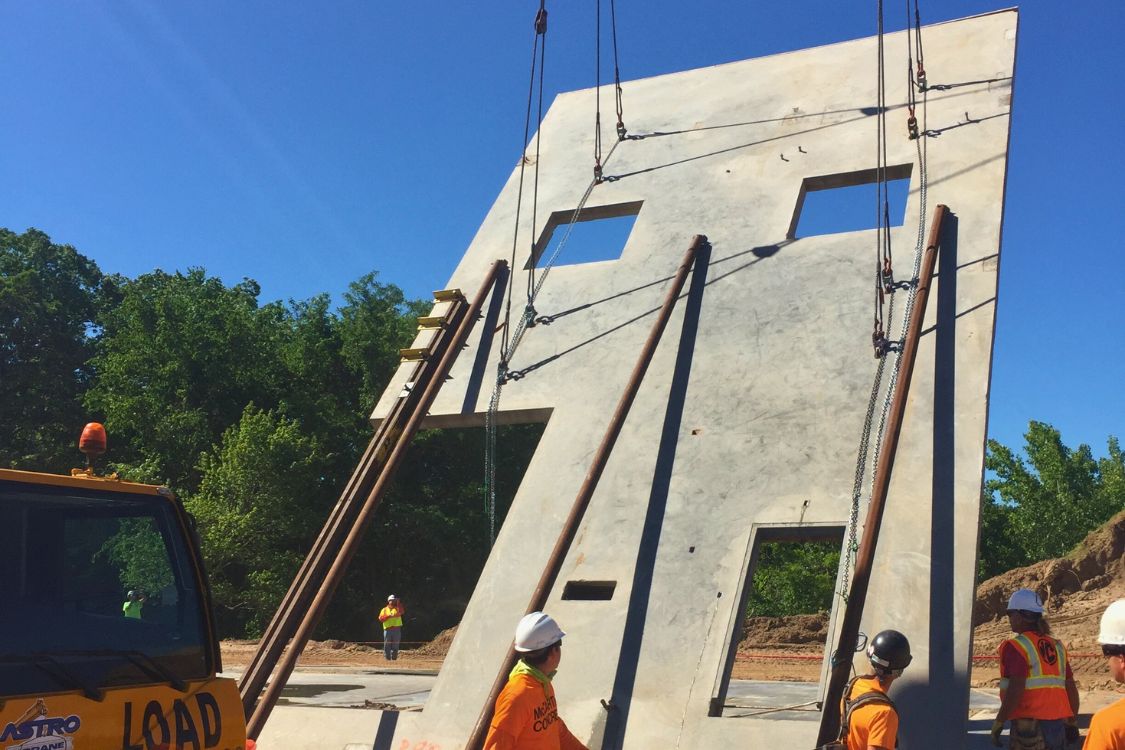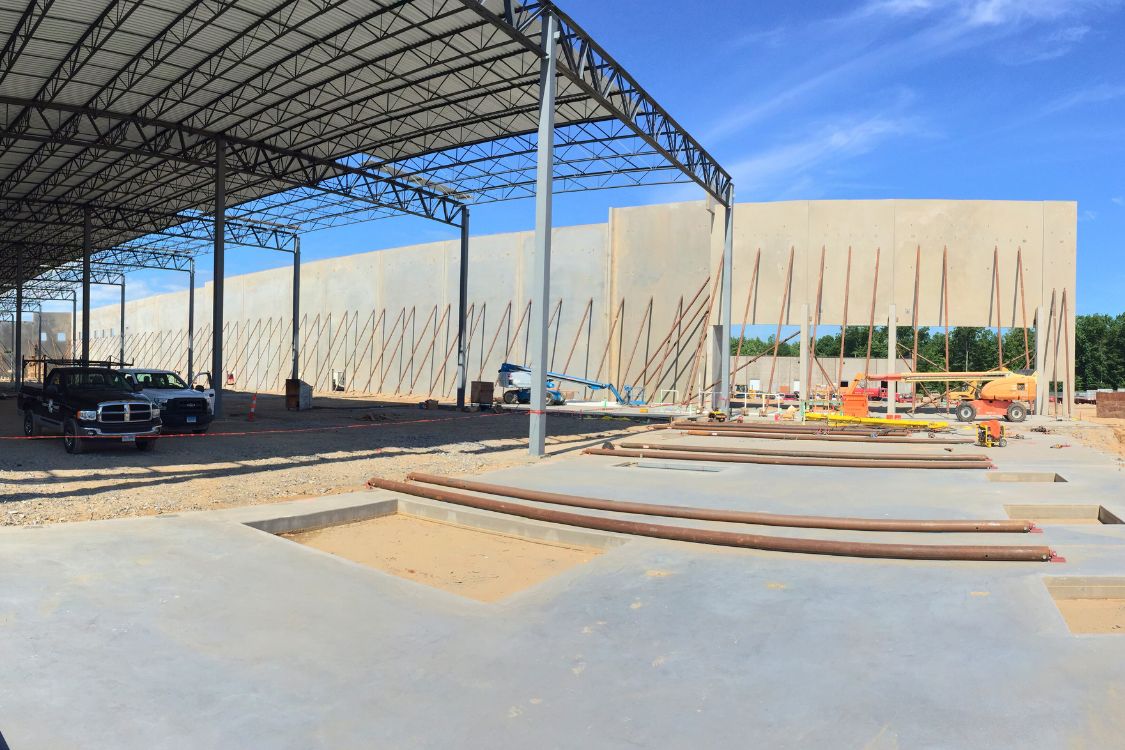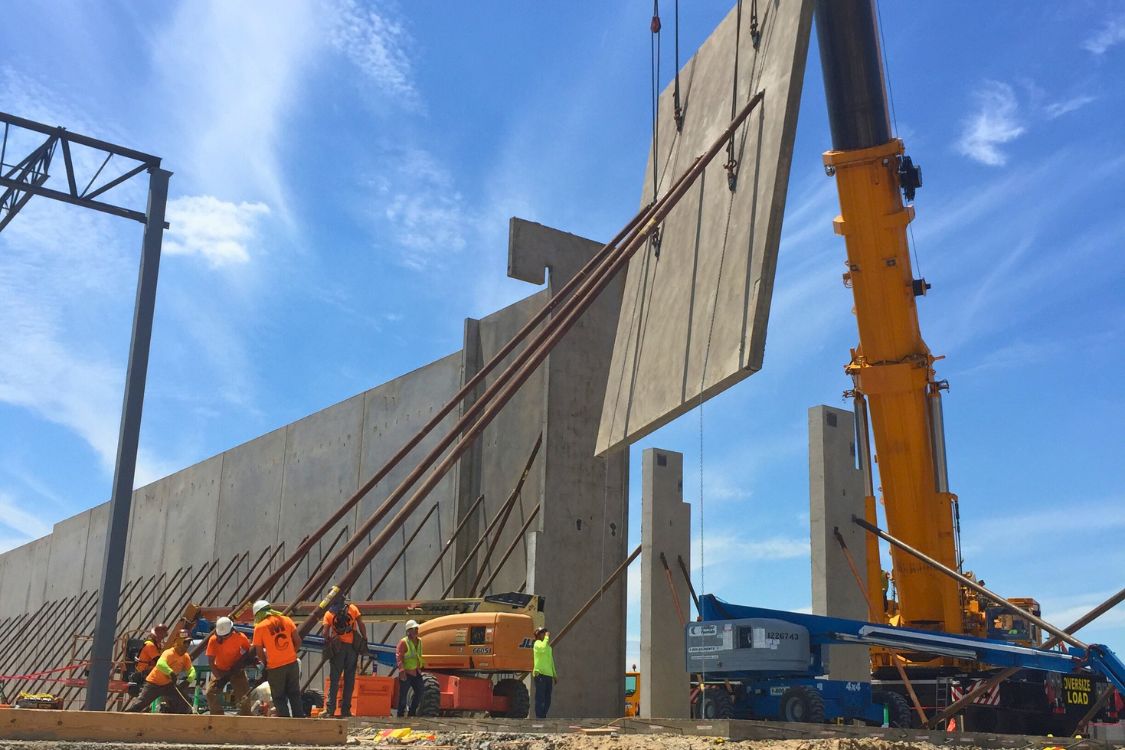Who We Are
Teamwork and Saftey
Featured Projects
What We Do
Careers
Markets / Regions
Contact Us
30 Talbot Ln, South Windsor, CT 06074
- (860) 310-2004
- office@mcconcrete.com
- M - F: 9:00 AM - 4:00 PM


McCarthy Concrete self performs all aspects of the tilt wall process. From casting slabs to forming panels, tying reinforcing, and placing concrete. Our crews are certified in tilt panel construction finishing and erecting.
When it comes to building large-scale structures efficiently and cost-effectively, tilt-up construction is a compelling solution. At McCarthy Concrete, we’re not just familiar with tilt-up construction; we’re experts in the field.
Tilt-up construction offers a host of benefits that make it a preferred choice for commercial and industrial projects. Unlike traditional methods that involve constructing walls upright, tilt-up construction involves casting concrete wall panels horizontally on the ground, typically adjacent to the building footprint. Once cured, these panels are lifted into position using cranes and tilted upright, hence the name “tilt-up.”
Tilt-up is widely recognized as an environmentally friendly construction method. Because walls are cast on-site, transportation costs are minimized.


Tilt-up concrete construction is quickly taking over North America, with at least 10,000 structures—enclosing more than 650 million square feet of space—being built every year.

One key advantage of tilt-up construction is its efficiency. By casting panels on the ground, contractors can work on multiple panels simultaneously, accelerating the construction timeline. This rapid assembly process not only reduces labor costs but also minimizes disruptions to other trades working on the site.
Moreover, tilt-up construction is highly adaptable, making it suitable for a wide range of projects. Whether it’s warehouses, distribution centers, retail complexes, or office buildings, tilt-up construction offers versatility in design and functionality. With advancements in panel forming and lifting techniques, architects and developers have greater flexibility to incorporate a variety of architectural features and achieve desired aesthetics.
Another significant benefit of tilt-up construction is its cost-effectiveness. By leveraging local materials and labor, contractors can minimize transportation and logistics expenses compared to other building options, resulting in overall cost savings. Additionally, the speed of construction means that projects can be completed faster, reducing financing costs and allowing owners to generate revenue sooner.


At McCarthy Concrete, we understand the intricacies of engineering tilt-up construction and the importance of precision and quality in every phase of the process. From meticulous panel forming to expert rigging and hoisting, our team is dedicated to delivering superior results that meet and exceed client expectations. Our long-standing memberships, including those from organizations such as ASCC, ACI, and the Tilt-Up Concrete Association, underscore our dedication to excellence in every facet of our operations. We also hold certifications in flatwork finisher, tilt-up construction, post tension slab construction, marine construction and inspection and more.
In conclusion, tilt-up construction offers a compelling alternative to traditional building methods, combining efficiency, durability, versatility, and cost-effectiveness. As leaders in the tilt-up construction industry, McCarthy Concrete is committed to delivering exceptional outcomes for our clients, ensuring that their projects are completed on time, within budget, and to the highest standards of quality. From project inception to completion, our team remains steadfast in our mission to ensure the success of each project we take on. Should you require further information or assistance, please do not hesitate to reach out—we are here to serve you. We are located in Connecticut but serve the entire Atlantic Coast on a project by project basis.

30 Talbot Ln, South Windsor, CT 06074
Copyright © 2024 Website Powered By Northland Marketing LLC